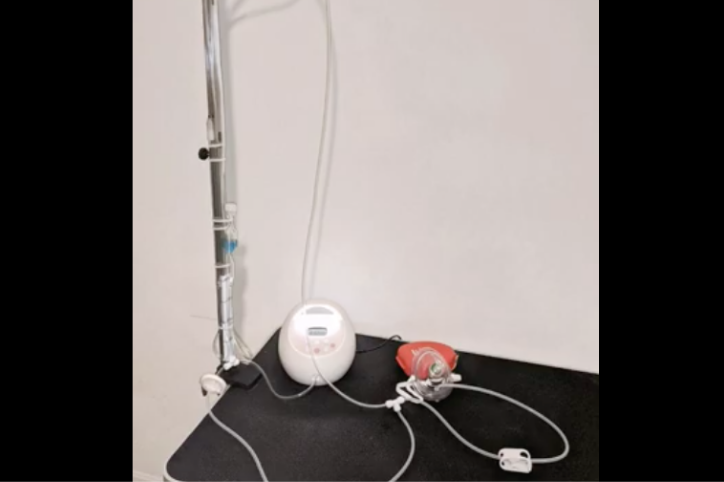As states go into variations on lockdowns or stay-at-home orders across the country, many people are feeling worried about the lack of adequate equipment and PPE for the front line of doctors and nurses who will be taking care of the sickest among us. One engineering mom, along with her three colleagues, has brilliantly figured out how to turn a breast pump into a much-needed respirator and I for one am giving her a standing ovation.
According to the Society of Critical Care Medicine, the coronavirus may send upwards of 960,000 Americans to hospitals in need of respirators of which the country only has 200,000 available. That is a terrifying math problem that we shouldn’t even have to contemplate at all. Social media has stepped up and individuals and families across the country are sharing hacks, crafts, and projects to make everything from masks to gowns to now respirators.
https://www.youtube.com/watch?v=BdSaXrxfXks&feature=youtu.be
And now, Brandi Gerstner, Grant Gerstner, Alex Scott, and Rachel LaBatt have stepped up to take on the shortage of ventilator at a critical time in the fight against Covid-19. Brandi Gerstner and her colleagues are all engineers from Southern Maryland and together they have figured out how to quickly and easily turn a breast pump that sucks into a pump that blows.
What We Know About Coronavirus and Pregnancy
Gerstner saw the potential in a breast pump when she realized that they are “reliable, sanitize-able, biomedical devices” that moms have been using for decades. The interval pulsing on a breast pump sucks to extract milk from a breast but what if that simple act of sucking could be reversed, Gerstner wondered. She told The Bay Net, “What if I could make it blow rather than suck? And so I grabbed my old one from the basement, grabbed a screwdriver and an X-Acto knife. Sure enough, you can turn it around very, very easily.”
“Safety is our first and foremost,” Gerstner told The Bay Net. “We put safety valves and backflow filters in to make sure that we’re not letting the virus get back into the compressor. We put in an electronic safety release, in case we exceed the medically safe pressure because I know that patients occasionally have backpressure or some other anomaly. We are not going to put this on anybody unless we know that it’s safe.”
At the moment, while Covid-19 begins its ascent toward peak infections across the country, the engineering group believes they can build these pumps at a fraction of the cost of traditional medical grade respirators. Traditional pumps can start at around $5,000 per unit but the prototypes that Gerstner and her team have created are closer to $500 per unit.
8 Facts About Coronavirus Every Parent Needs to Understand
Gerstner pointed out that she and her team’s goal is not to replace the sophisticated and urgently needed ICU ventilators that are currently on a six-week backlog. “The goal for this is to help meet the shortage for the majority of patients to free up some of those highly sophisticated ventilators for those who need them,” Gerstner told The Bay Net.
The group is trying to gain FDA approval but they first have a few hurdles to get over such as a review from a pulmonologist and then testing in a biomedical simulation lab. But for now, the group trudges on in hopes of fighting the novel coronavirus outbreak.
If you have an old breast pump of any model that you can donate, reach out to Gerstner and her group at breastpumpvent@gmail.com.
And remember, stay home, stay healthy, and you will save lives.
Help Prevent the Spread of the Coronavirus
Visit the Centers for Disease Control at CDC.gov or the World Health Organization at Who.int for the latest information on the coronavirus and learn what you can do to stop the spread.
Join Evolve Media’s #WeSayThanks campaign to show support to essential workers and thank them for their selfless acts of kindness and heroism. To learn how to get involved, please visit https://www.
